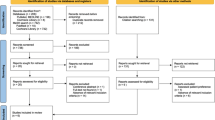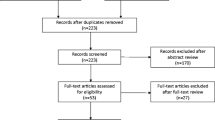Abstract
Introduction and hypothesis
The office setting provides the opportunity for surgeons to perform specific procedures more efficiently than in a day case operating theater. Consequently, health care systems are interested in altering surgical services from a day case operating theater to an office setting. The impact on patient’s satisfaction is more challenging to estimate. The bulking procedure is an intervention for urinary stress incontinence. It was originally performed in the day case operating theater under general anesthesia or sedation. Today, the procedure is mostly done under local anesthesia. The aim of this study was to assess patient satisfaction changing from day case operating theater to office setting. Our hypothesis was that patients preferred the office setting.
Methods
A prospective cohort study was executed from 15 September 2020 to 1 June 2021. A total of 115 women underwent a bulking procedure in the office setting. A follow-up (phone questionnaire) 3 months post-operatively for quality assurance is mandatory. The office setting experience was assessed concurrently.
Results
A total of 95.6% (110 out of 115) preferred the bulking procedure performed in the office setting. The reasons were: a short waiting time (71 out of 110; 64.5%), less nervousness (47 out of 110; 42.7%), and they felt more secure (49 out of 110; 44.5%). On a visual analog scale (VAS) from 0 to 10, 37.4% (43 out of 115) considered a short waiting time important (VAS 10) and 81.7% (94 out of 115) rated a short waiting time ≥ VAS 5.
Conclusions
The office setting provides a patient-friendly and comfortable place for the bulking procedure and is generally preferred by the patient over the day case operating theater. Important for the preference is the accessibility and minimal waiting time. The office setting is therefore both convenient and efficient for surgeon and patient.



Similar content being viewed by others
References
Haylen BT, de Ridder D, Freeman RM, et al. International Urogynecological Association, International Continence Society. An International Urogynecological Association (IUGA)/International Continence Society (ICS) joint report on the terminology for female pelvic floor dysfunction. Neurourol Urodyn. 2010;29:4–20. https://doi.org/10.1002/nau.20798.
AUGS-IUGA. Joint Publication. Joint report on the terminology for surgical procedures to treat stress urinary incontinence in women. Developed by the Joint Writing Group of the American Urogynecologic Society and the International Urogynecological Association. Int Urogynecol J. 2020;31:465–78.
Elers J, Bing MH, Birkefoss K, Rohde JF, Ussing A, Glavind K. TVT or TVT-O?—A systematic review and meta-analysis comparing efficacy, complications, and re-operations. Eur J Obstet Gynecol Reprod Biol. 2021;258:146–51. https://doi.org/10.1016/j.ejogrb.2020.12.005.
Freitas AMI, Mentula MP, Tulokas S, Mikkola TS. Tension-free vaginal tape surgery versus polyacrylamide hydrogel injection for primary stress urinary incontinence: a randomized clinical trial. J Urol. 2020;203(2):372–8. https://doi.org/10.1097/JU.0000000000000517.
Lin YH, Lee CK, Chang SD, Chien PC, Tseng LH. Focusing on long-term complications of mid-urethral slings among women with stress urinary incontinence as a patient safety improvement measure. A protocol for systematic review and meta-analysis. Medicine (Baltimore). 2021;18(24):100. https://doi.org/10.1097/MD.0000000000026257.
Brosche T, Kuhn A, Lobodasch K, Sokol ER. Seven-year efficacy and safety outcomes of Bulkamid for the treatment of stress urinary incontinence. Neurourol Urodyn. 2021;40(1):502–8. https://doi.org/10.1002/nau.24589.
Avery K, Donovan J, Peters TJ, Shaw C, Gotoh M, Abrams P. ICIQ: a brief and robust measure for evaluating the symptoms and impact of urinary incontinence. Neurourol Urodyn. 2004;23(4):322–30. https://doi.org/10.1002/nau.20041.
Mostafa A, Abdel-Fattah M. A new validated score for detecting patient-reported success on postoperative ICIQ-SF: a novel two-stage analysis from two large RCT cohorts. Int Urogynecol J. 2017;28:95–100. https://doi.org/10.1007/s00192-016-3070-0.
Injectable Bulking Agents for the Treatment of Urinary and Fecal Incontinence. Corporate Medical Policy, An Independent Licensee of the Blue Cross and Blue Shield Association, Last Review 11/2021. https://www.bluecrossnc.com/sites/default/files/document/attachment/services/public/pdfs/medicalpolicy/injectable_bulking_agents_for_the_treatment_of_urinary_and_fecal_incontinence.pdf
Capmas P, Pourcelot A-G, Giral E, Fedida D, Fernandez H. Office hysteroscopy: a report of 2402 cases. J Gynecol Obstet Biol Reprod (Paris). 2016;45(5):445–50. https://doi.org/10.1016/j.jgyn.2016.02.007.
Mak JN, Imran A, Burnet S. Office hysteroscopy: back to the future. Climacteric. 2020;23(4):350–4. https://doi.org/10.1080/13697137.2020.1750589.
Clements S, Sells H, Wright M. Use of video in flexible cystoscopy: a prospective randomized study of effect on patient experience. Ambul Surg. 2004;11:45–6. https://doi.org/10.1016/j.ambsur.2004.07.006.
Soomro KQ, Nasir AR, Ather MH. Impact of patient's self-viewing of flexible cystoscopy on pain using a visual analog scale in a randomized controlled trial. Urology. 2011;77:21–3. https://doi.org/10.1016/j.urology.2010.08.012.
Anglin C, Knoll C, Mudd B, Ziegler C, Choi K. Music’s effect on pain relief during outpatient urological procedures: a single center, randomized control trial focusing on gender differences. Transl Androl Urol. 2021;10(6):2332–9. https://doi.org/10.21037/tau-20-1311.
Gupta S, Das SK, Jana D, Pal DK. Distraction during cystoscopy to reduce pain and increase satisfaction: randomized control study between real-time visualization versus listening to music versus combined music and real-time visualization. Urol Ann. 2019;11(1):33–8. https://doi.org/10.4103/UA.UA_191_17.
Author information
Authors and Affiliations
Contributions
C.S. Juhl: protocol development, data collection and management, data analysis, manuscript writing; J. Bjørk: data collection; K. Glavind: project development, data collection, manuscript editing.
Corresponding author
Ethics declarations
Conflicts of interest
None.
Additional information
Publisher’s note
Springer Nature remains neutral with regard to jurisdictional claims in published maps and institutional affiliations.
Rights and permissions
About this article
Cite this article
Juhl, C.S., Bjørk, J. & Glavind, K. Treatment of stress urinary incontinence with polyacrylamide hydrogel in an office setting: patient perspectives. Int Urogynecol J 33, 2169–2176 (2022). https://doi.org/10.1007/s00192-022-05135-3
Received:
Accepted:
Published:
Issue Date:
DOI: https://doi.org/10.1007/s00192-022-05135-3




